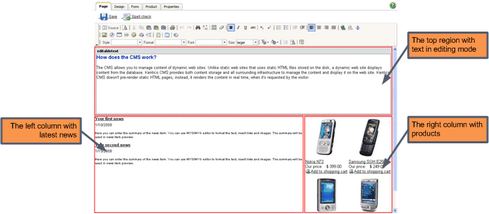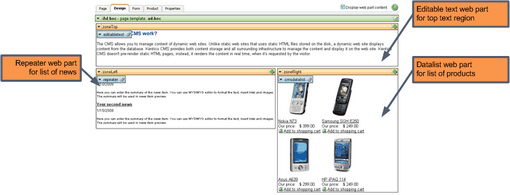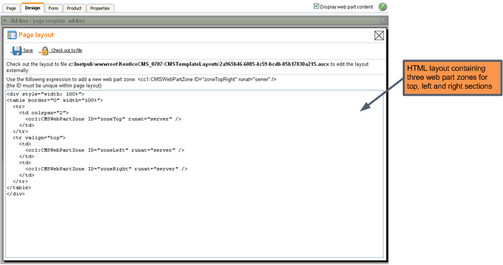Every page in Kentico CMS web sites uses some page template. Page template consists of layout with particular web parts and their configuration. The portal engine page templates are physically stored in the database, so you will not find them on the disk.
The design of the page is defined by page layout, which is a standard HTML code. The HTML code is used to define two-column, three-column or any custom layout you can think of.
The page layout contains special markup tags that specify places where the developer can place web parts - so called web part zones. A web part zone can contain any number of web parts.
A web part (also called "servlet", "portlet" or "module" in some other solutions) is a piece of code that displays some content, e.g. a single document. Technically, web parts are standard ASCX user controls with some predefined programming interface.
The following figures show an example of simple page, its page template, layout, web part zones and web parts:
1) The sample page on the live site
This image shows our sample page on the live site. It displays the text on the top, news in the left column and products on right.

2) The sample page in the editing mode
Here you can see the top region with editable text and the lists of news and products.

3) The page template of the sample page on the design tab
This the design mode of the page template used for our sample page. As you can see, it consists of three web part zones - zoneTop, zoneLeft and zoneRight. The web part zones contain the web parts.

4) HTML layout of the page template
This image shows the HTML layout of the page template with tags representing web part zones on the top and in the table columns. We are using tables for layout here, but you can easily use CSS-based layout - you have full control over the HTML code and CSS styles.
